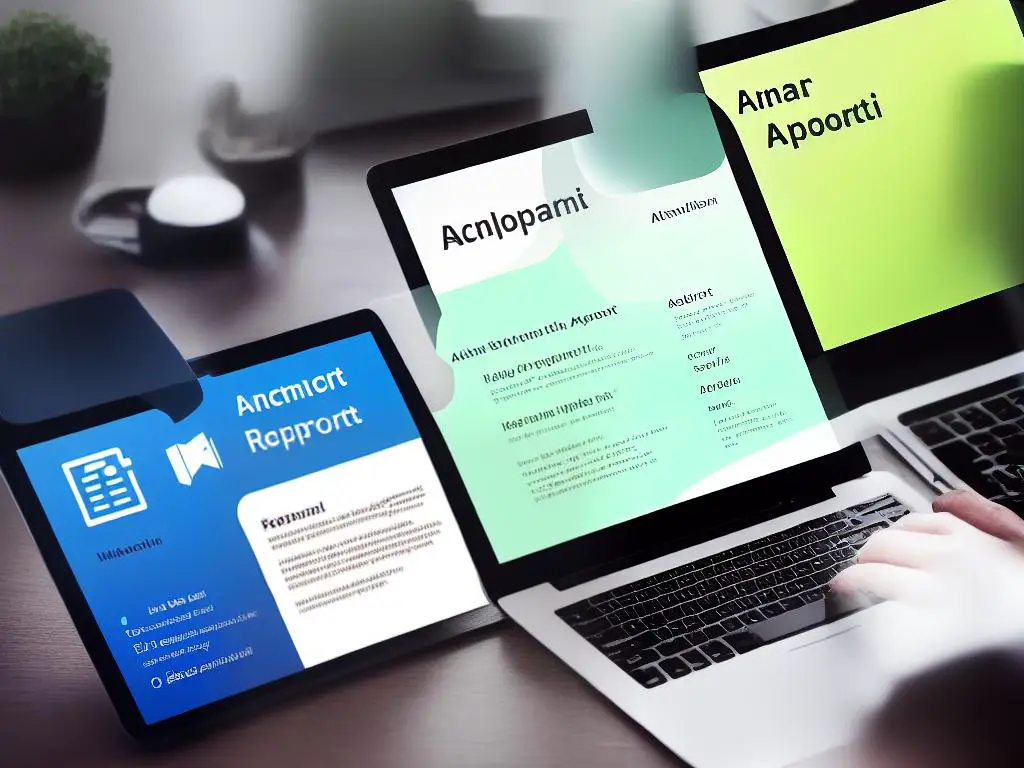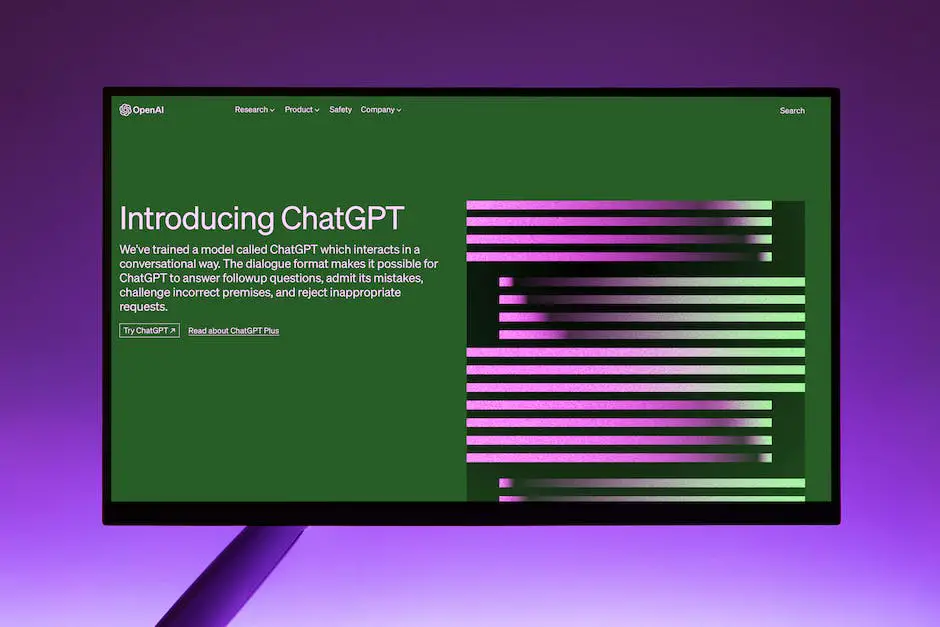Artificial intelligence has made significant strides in recent years, transcending boundaries and revolutionizing countless industries. One area in which AI has garnered tremendous attention is the realm of writing, where it demonstrates remarkable potential to transform the way words come to life on the page. As a curious member of the general public, exploring the fascinating world of AI-driven writing promises to deliver a deeper understanding of this rapidly evolving technology and its far-reaching implications on various aspects of our lives.
History of AI Writing
Early Attempts at Natural Language Processing
The history of artificial intelligence (AI) writing dates back to the 1950s with the emergence of computer science as a field of study. Early efforts in AI writing and content creation revolved around natural language processing (NLP), which aimed to enable computers to understand and generate human language. An early instance of NLP is the ELIZA program, developed in the mid-1960s by Joseph Weizenbaum at MIT. ELIZA mimicked the behavior of a Rogerian psychotherapist, engaging users in conversations and offering responses based on pattern matching and substitution methodologies. Although rudimentary, ELIZA showcased the potential for computers to generate human-like text.
From Rule-Based Systems to Statistical Approaches
In the 1970s and 1980s, AI research shifted towards rule-based systems and expert systems, which focused on encoding knowledge as rules and using logical reasoning to generate content. However, these systems offered limited understanding of human language, as they could not easily adapt to new information, and their rigid rule structures made them less versatile than human language processing capabilities.
With the increasing availability of large digital text corpora and development of more advanced computational methods in the 1990s, AI writing moved towards statistical approaches. These methods leveraged real-world data to develop models for language understanding and generation. Key advancements during this time include the use of hidden Markov models and the introduction of machine translation systems, which could automatically translate text between languages.
The Rise of Machine Learning and Deep Learning
The 2000s witnessed the growth of machine learning, with AI researchers applying these techniques to language processing tasks. Machine learning allowed algorithms to automatically learn and adapt to new data, leading to improvements in AI writing and content generation. Decision tree, support vector machine, and later, neural network models became popular means to tackle NLP tasks like text classification, sentiment analysis, and named entity recognition.
The 2010s marked the rise of deep learning and its subsequent impact on AI writing. Deep learning approaches hinged on the use of neural networks with multiple hidden layers, enabling computers to learn complex language patterns and create increasingly sophisticated content. The birth of sequence-to-sequence models, also known as “seq2seq” models, enabled better representations of input and output sequences and improved the quality of generated text.
GPT-3 and the Current State of AI Writing
In the late 2010s and 2020s, attention-based neural networks have become central to advancements in AI writing and content generation. The introduction of the Transformer model by Vaswani et al. in 2017 set the stage for the development of various powerful AI text generators.
One of the most striking instances of AI writing in recent times is the Generative Pre-trained Transformer-3 (GPT-3) by OpenAI. Released in 2020, GPT-3 has been praised for its exceptional ability to generate human-like text. The model’s power lies in its training on diverse and vast amounts of text, as well as its sheer scale—175 billion trainable parameters.
Exploring the Future of AI Writing
Artificial intelligence (AI) writing has seen remarkable growth in recent years, progressing from rule-based systems and simple pattern-matching to deep learning models and powerful neural networks. As AI’s role in content generation continues to expand, its potential applications span a variety of fields such as journalism, creative writing, customer support, and education. Despite these advances, generating emotionally engaging content and ensuring ethical use of AI-generated text remain ongoing challenges. Nevertheless, the dedication and innovation of researchers will undoubtedly continue to shape the future of AI writing and its capabilities.

Capabilities and Limitations
Delving into AI-Driven Writing Capabilities
AI-driven writing boasts a range of capabilities, with content generation being a key feature. By analyzing and processing vast amounts of data, AI algorithms can quickly produce written content, such as structured summaries, news articles, or data-driven reports, with minimal human input required. The speed at which these systems work significantly outpaces human capabilities.
In addition to content generation, AI-driven writing tools also enhance users’ writing abilities by offering suggestions for improved phrasing, grammar, and punctuation. Using large datasets and advanced natural language processing algorithms, these systems can understand the context and provide relevant editing recommendations.
Beyond these practical applications, AI-driven writing can also generate creative outputs, such as poetry, stories, and scripts for movies or plays. These innovative works not only showcase the uniqueness of AI-generated content, but they can also inspire human writers and spark fresh ideas.
Limitations of AI-Driven Writing
While AI-driven writing tools boast remarkable capabilities, they also have inherent limitations. One major drawback involves the potential for inaccuracies in the content generated by AI. Even though AI algorithms can process vast amounts of data and rapidly create written materials, they might produce incorrect or contextually lacking information. This may be attributed to biases in the training data or algorithmic limitations.
Ethical concerns also arise with AI-generated content, as plagiarism, misinformation, and even deepfake-style material can be produced using these tools. This presents risks to information integrity and the credibility of human authors. Moreover, AI’s involvement in writing could lead to job losses for writers and journalists, intensifying the ethical debate.
Additionally, AI tools often have difficulty retaining the human essence in their output. While they can generate grammatically accurate text, they lack the emotions, empathy, and unique perspectives that only human authors can offer. This may result in content that feels artificial or inauthentic, potentially failing to resonate with readers.
Another limitation is that AI writing tools typically require vast amounts of data to function efficiently and effectively. This data may not always be readily available or easily accessible, restricting the potential applications of AI writing tools. Furthermore, as AI algorithms continuously evolve, there might be concerns regarding data privacy and the security of the information used for content generation.

Applications in Various Industries
AI Writing in Marketing
Despite these limitations, artificial intelligence writing has become an indispensable tool in the marketing industry. As content marketing gains traction, companies have increasingly turned to AI-generated content to efficiently produce keyword-rich articles, social media posts, and sales copy at scale. AI writing software can learn the nuances of a brand’s voice, ensuring consistent messaging across platforms. Additionally, tools like Grammarly and ProWritingAid can refine content through AI algorithms, checking for grammar, syntax, and stylistic errors.
Marketing teams are also leveraging AI algorithms to generate personalized content for individual users, enhancing email campaigns and targeted advertisements. Natural language generation algorithms can analyze user data, demographics, and interests, producing more tailored messages that lead to higher engagement and conversion rates.
AI Writing in Journalism
Journalism has seen a significant influx of AI-generated content in recent years. Newsrooms are using artificial intelligence tools to automatically generate summaries, headlines, and news articles, especially for repetitive topics such as sports results, financial reports, and weather forecasts. The Associated Press, for instance, uses an AI tool called Automated Insights to produce news articles on a massive scale.
Furthermore, AI writing can help journalists gather and filter information quickly. Intelligence agencies and media outlets are developing algorithms that can sift through massive amounts of data, identify clusters of relevant information, and present it in a digestible format. This enables reporters to receive leads on breaking news, facts, and quotations to supplement their articles.
AI Writing in Education
AI writing technology is increasingly finding its way into the realm of education. Educators can use AI tools to provide feedback on students’ written assignments, identify common errors, and enhance their communication skills. AI-driven grammar checkers and proofreaders can offer real-time feedback, enabling students to refine their language skills consistently.
Moreover, AI-generated content can serve as a supplementary educational resource in various subjects. By analyzing massive datasets, AI tools can generate summaries, quizzes, or study notes based on specific curriculum requirements, facilitating both in-class and remote learning experiences.
AI Writing in Entertainment
The entertainment industry has also begun exploring the potential of AI writing technology. AI-generated scripts and dialogues are being used in video games, TV, and movies to create dynamic, interactive experiences for users. Developers and writers can create massive storylines and countless branching narratives driven by AI algorithms to accommodate users’ decisions within the narrative, leading to a more immersive entertainment experience.
Moreover, AI-generated writing has also made its way into the world of poetry and literature. Creative writing algorithms, such as GPT-3, have demonstrated the ability to generate relevant, coherent, and creative texts. Emerging authors and artists are using AI-as-creative-partners to experiment with new styles, formats, and stories.
Introduction to Artificial Intelligence Writing
Artificial intelligence writing has rapidly become a transformative tool across a variety of industries, including marketing, journalism, education, and entertainment. Capable of generating content efficiently, proofreading, and enhancing creativity, AI writing offers numerous valuable use cases for creating tailored user experiences and expanding creative possibilities. As the technology behind AI writing continues to advance, its potential impact on industries and everyday lives will only grow stronger.

Future Trends and Developments
Evolution of Natural Language Understanding
One of the most critical components driving the future of artificial intelligence (AI) writing is the increased capability of AI systems to process and understand natural language. Recent advancements in Natural Language Processing (NLP) and Natural Language Understanding (NLU) technologies have paved the way for AI writing tools, like OpenAI’s GPT-3, to produce more coherent and contextually relevant content.
As these technologies evolve, AI writing systems will become even more adept at deciphering complex language patterns, idiomatic expressions, and cultural context. This advancement will empower AI writing tools to generate content that is engaging and accurate for readers while minimizing the need for human editing and intervention.
Expanding Customizability
Another key development in the future of AI writing will be the ability to customize AI-generated content to a greater degree. As AI writing systems become more sophisticated, they will be able to generate content that is better tailored to specific industries, target audiences, and writing styles. This will enable users to more effectively employ AI-generated content for a wider range of applications, from marketing copy and technical documents to creative writing and journalism.
Greater customizability will also mean that AI-generated content can better address its audience’s specific needs and preferences. For example, users may be able to generate content that caters to different demographics, language abilities, or even personal interests. Additionally, AI writing tools may begin to incorporate user feedback in real-time, allowing for an even more personalized and adaptive AI writing experience.
Enhancing Interactivity
As AI writing tools continue to evolve, they are expected to become more interactive, allowing users to engage in real-time dialogue with AI systems and collaborate on content creation more effectively. This can significantly streamline the writing process, as users may be able to receive instant feedback, suggestions, and revisions from AI systems while writing.
This enhanced interactivity will allow AI writing tools to become more like virtual writing assistants, easing the burden of content creation and making editing and revisions more efficient. It is even possible that AI writing systems could be integrated into more collaborative platforms, such as online writing communities, where AI and humans can work together on content creation in a shared space.
Impact on Job Market and Society
As AI writing tools become more advanced and widespread, there will undoubtedly be some impact on the job market, particularly in fields such as content creation, journalism, and technical writing. While AI-generated content may not replace human writers entirely, it is likely to supplement their work, allowing for increased productivity and efficiency.
While this may lead to job displacement in some areas, it will also create opportunities for new roles and skill sets that focus on refining, curating, and managing AI-generated content. A transition may begin to occur where human writers focus on providing the unique insights, creativity, and personal touch that AI systems currently cannot replicate, while AI tools handle more routine content generation tasks.
In terms of societal impact, AI-generated content has the potential to democratize information and content creation, making it easier for individuals and organizations to develop high-quality written materials, regardless of their background or resources. However, potential risks and ethical concerns, such as the spread of disinformation or the use of AI tools for malicious purposes, must also be vigilantly monitored and addressed.
Introduction
As the field of artificial intelligence continues to evolve and advance, AI writing has emerged as a cutting-edge technology that has the potential to revolutionize the way we create and consume written content. AI writers are increasingly being integrated into various applications, making them valuable tools for professional content creators, students, marketers, and small business owners. As we envision a future dominated by AI-generated content, it is essential to examine the advancements in natural language understanding, customizability, and interactivity, as well as the potential implications on the job market and society as a whole.

Choosing the Right AI Writer
Understanding AI Writers
AI writers refer to software solutions that utilize advanced language models and algorithms to understand natural language and generate human-like text outputs. Among the most prominent AI writing models available today are those based on OpenAI’s GPT-3 technology, which has demonstrated impressive capabilities in understanding context and generating coherent, contextually relevant text. Numerous AI writing platforms are now available, each offering distinct features tailored to diverse user profiles. By understanding the potential applications and limitations of these AI-powered tools, we can better prepare for the transformative impact they will have on the realm of written communication.
AI Writing Platforms
Some popular AI writing platforms include:
- Jarvis (previously known as Conversion.ai): Jarvis is one of the most renowned AI writing platforms, offering a wide range of pre-built templates, such as blog post introductions, social media captions, and email subject lines. Its focus on marketing and content creation makes it ideal for entrepreneurs and content creators.
- Copy.ai: This platform focuses on content marketing and provides AI-generated content for emails, blog posts, and advertising copy. It offers a range of templates designed for different types of content, making it suitable for business owners and marketers.
- Kuki: Kuki is an AI-powered writing assistant that helps users create blog posts, social media posts, and website copy. Its tailored templates and user-friendly interface make it a suitable choice for beginners as well as experienced content creators.
Choosing the Right AI Writer
When selecting an AI writing platform, you should consider several factors to find the best match for your needs:
- Purpose & Features: Before selecting an AI writer, determine your primary purpose for using it. This will help identify specific features you need, such as blog post templates, email copy, or social media suggestions. Identify platforms offering these features and compare them to find the best fit.
- Pricing: Different AI writing platforms have varying pricing structures, ranging from free trials and pay-per-use to monthly subscriptions. Determine your budget and needs to find a platform offering a cost-effective pricing model that suits you.
- User Interface: The ease of use and the learning curve of a platform are important factors to consider. Choose a platform with straightforward navigation and a clean interface to minimize the time spent learning the software.
- Quality of Output: AI-generated content is likely to require editing, but testing different platforms can help you discern which ones provide more coherent and relevant outputs. Compare the writing quality among different platforms before settling on one.
- Integrations: It can be helpful to select an AI writing tool that integrates with other software or apps you frequently use. This will streamline your workflow and make it easier for you to generate, edit, and share content.
- Support & Community: Active user communities and responsive customer support can be valuable resources when learning to use an AI writing platform. Look for companies that provide educational resources and have a robust community where you can ask questions and learn from other users’ experiences.
Conclusion
AI writing solutions have come a long way in recent years. They continue to evolve, offering diverse possibilities for users seeking assistance in their content creation endeavors. By understanding the different options available and considering the criteria mentioned above for selecting a suitable platform, you can harness the power of AI writing to enhance your content production, save time, and focus on the creative aspects of your work. Keep in mind, however, that AI-generated content may require editing and refinement, as the technology is still not perfect and might not capture the nuances of human language and creativity in its entirety.

Ultimately, the rapidly evolving world of AI-driven writing has proven to be a game-changer in the way content is generated, refined, and utilized across numerous industries. As advancements continue to reshape the landscape, staying informed about the latest innovations, trends, and applications is vital in order to harness the true power of AI writing technology. It’s an exciting time to witness this revolution in action, as we unlock the potential for enhanced creativity, efficiency, and collaboration through the integration of artificial intelligence in the writing process.

